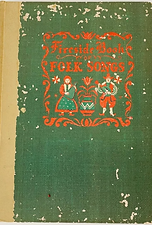
My parents and the Dole Library in Oak Park, Illinois provided the abundance of books that opened the world of words for me, and led me to realize that writing was a wonderful way for this shy, socially awkward, and introverted—but feisty—little girl to find and be herself. I later learned it was not the only way—but words are still an inevitable part of how my brain processes all that I notice as I walk through my days on earth.
Poetry seemed a natural inclination for me—perhaps because because rhythm and the lyrical tropes of song and music—classical, opera, folk music, and more—were always part of my life. Memories—and one precious digitized recording— of my parents singing Yiddish lullabies as we drove in the night on road trips still chokes me up—and I’m guessing that via genes or environment, music and poetry began to score my life...and still does.









This did not mean I didn't have dreams of becoming a ballerina or a cowgirl—not ironically the content areas of my first two middle grade novels (one published, one in my files)....
...Or making use of my enjoyment of becoming the center of attention in spite of my shyness by joining a superb pantomime troupe and learning to read poetry for speech contests in high school, and graduating as Class Orator!







Love of poetry, dance, music, art, and horses traveled with me through the years—as did writing poetry during many years when I wrote and presented clinical papers in my loved career as a social worker.
I learned slowly about the business of submitting work—a huge step for shy and rejection-phobic me— receiving plenty of rejections with an occasional acceptance. I published some poetry and a few essays over the years of work, but not until motherhood and reading, reading, reading to our child did I fall in love with writing for children, and began a so-far two-decades-long journey of learning, practicing, and feeling passionately in love with the work. And learning more, over again, and always.
Since 1999, when I wrote (and shockingly, published quickly) my first-ever completed short story in our family's beloved Cricket Magazine—and discovered that the onward journey would never be that quick or easy again—I've devoted my writing life to writing fiction and poetry for children, and since mid-2018, working full-time writing for children, and adding poetry for adults to my daily writing practice.





